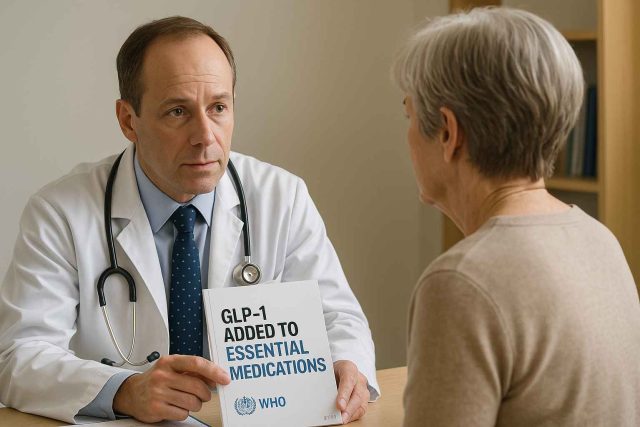When the World Health Organization (WHO) updates its list of Essential Medications, the healthcare community pays close attention. Recently, the addition of GLP-1 receptor agonists for type 2 diabetes to this list has sparked major discussions across clinical, policy, and patient care settings. Could this be the turning point for making advanced therapies more accessible worldwide?
Table of Contents
- Why GLP-1 Inclusion Matters for Global Health
- Impact on Diabetes Treatment Standards
- Access, Affordability, and Equity Challenges
- The Future of Essential Medications in Diabetes Care
- Conclusion
- FAQs
Why GLP-1 Inclusion Matters for Global Health
The WHO’s Essential Medications list is more than a catalog. It serves as a guide for governments, policymakers, and healthcare systems to prioritize access to treatments that have the highest value for population health. By including GLP-1 receptor agonists, WHO acknowledges their clinical importance for managing type 2 diabetes.
GLP-1 therapies such as semaglutide (Ozempic), dulaglutide (Trulicity), and liraglutide (Victoza) have shown not only effective glycemic control but also cardiovascular benefits. In fact, studies highlight their role in reducing risks of major adverse cardiovascular events in patients with type 2 diabetes. For many, this represents a significant shift away from relying solely on older drugs like metformin or sulfonylureas.
The designation as Essential Medications carries symbolic and practical weight. It signals that GLP-1 receptor agonists are no longer niche treatments but core tools in modern diabetes care. For clinicians and policymakers, this may encourage broader adoption, support reimbursement decisions, and drive global efforts to improve supply chain stability.
Impact on Diabetes Treatment Standards
The addition of GLP-1 receptor agonists to the Essential Medications list will likely influence international guidelines. Already, organizations such as the American Diabetes Association (ADA) and the European Association for the Study of Diabetes (EASD) have endorsed GLP-1s for patients with cardiovascular risk factors. WHO’s move aligns with this clinical consensus, reinforcing their role as frontline options for high-risk patients.
For healthcare providers, this shift could normalize prescribing GLP-1 receptor agonists earlier in therapy, rather than reserving them for later stages. In practice, patients may see earlier intervention with drugs like Ozempic, which has gained widespread recognition beyond the medical field. This reflects not only their efficacy but also the growing awareness of their role in weight management.
Pharmaceutical companies will likely view WHO’s recognition as validation of their products’ importance. However, this may also increase pressure to address cost concerns. After all, essential status implies that these medications should be accessible to all patients, regardless of geography or income.
For more detailed perspectives on diabetes care strategies, readers can explore Diabetes in Control’s articles.
Access, Affordability, and Equity Challenges
Although WHO’s recognition is a milestone, challenges remain. Essential Medications designation does not automatically guarantee affordability or universal access. GLP-1 therapies are often expensive, creating barriers for patients in low- and middle-income countries.
Pricing debates are already prominent. For example, in the United States, semaglutide has faced scrutiny over affordability, despite its clinical success. If governments are to implement WHO’s guidance effectively, negotiations with manufacturers will be necessary. Global health advocates argue for differential pricing models to ensure fair access across different economies.
Supply chains also pose difficulties. Manufacturing shortages have already affected availability in some markets due to rising demand. If demand continues to grow globally, health systems must prepare for scalability challenges.
Nevertheless, the Essential Medications label may provide leverage for governments to negotiate better procurement deals. It also highlights the urgent need to balance innovation with affordability. Patients seeking treatment guidance should be encouraged to consult resources like Healthcare.pro for personalized medical advice.
The Future of Essential Medications in Diabetes Care
The inclusion of GLP-1 receptor agonists raises broader questions about the future of Essential Medications in diabetes. Could SGLT2 inhibitors be next? Drugs such as empagliflozin (Jardiance) and dapagliflozin (Farxiga) have also demonstrated cardiovascular and renal benefits, making them strong candidates for eventual inclusion.
As the burden of diabetes continues to rise, especially in regions with limited healthcare resources, the Essential Medications framework will remain a critical tool for prioritizing treatments. The GLP-1 milestone sets a precedent for integrating newer, more effective therapies into global health planning.
Moreover, this move reflects a shift toward holistic diabetes management. No longer are treatments judged solely by their ability to lower HbA1c. Instead, broader outcomes—such as cardiovascular protection and weight management—are now recognized as equally vital. This evolution in thinking may reshape how future diabetes therapies are evaluated and prioritized.
For additional insights into how diabetes treatment is evolving, see more perspectives from Diabetes in Control.
Conclusion
WHO’s decision to add GLP-1 receptor agonists to the Essential Medications list marks a historic moment in diabetes care. It validates the importance of these therapies, encourages global access, and aligns with modern clinical standards. Yet challenges remain, particularly in ensuring affordability and equitable distribution. The path ahead will require collaboration between policymakers, manufacturers, and healthcare providers to make these advancements a reality for patients worldwide.
FAQs
Why did WHO add GLP-1 receptor agonists to the Essential Medications list?
WHO added them due to strong evidence of their effectiveness in managing type 2 diabetes and reducing cardiovascular risk.
Which GLP-1 drugs are considered essential?
Common examples include semaglutide (Ozempic), dulaglutide (Trulicity), and liraglutide (Victoza).
Will this make GLP-1 drugs cheaper worldwide?
Not immediately. However, the Essential Medications designation gives governments leverage to negotiate lower prices.
Does this change treatment guidelines for diabetes?
While many guidelines already recommend GLP-1s, WHO’s decision strengthens their role as core options in managing type 2 diabetes.
What does this mean for patients with type 2 diabetes?
Patients may gain earlier access to effective therapies, though affordability and availability will vary by region.
Disclaimer
This content is not medical advice. For any health issues, always consult a healthcare professional. In an emergency, call 911 or your local emergency services.
